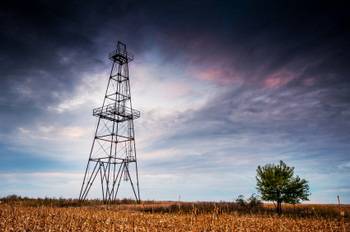
Report compares thirty-one states’ regulations on hydraulic fracturing.
Fracking, more formally known as hydraulic fracturing, has created a natural gas boom and revitalized some rural economies – but not without raising environmental concerns. The advanced drilling technique designed to release shale gas appears to alter the mineral composition of local environments and may increase the likelihood of earthquakes and water contamination in communities near drilling sites. Also, because fracking may release previously inaccessible reservoirs of carbon into the atmosphere, some have speculated that it may also contribute to global climate change, even as natural gas is a less carbon-intensive fuel.
State legislatures have reacted to these environmental concerns with a patchwork of different regulations. The Resources for the Future’s (RFF) Center for Energy Economics and Policy recently issued a report, The State of State Shale Gas Regulations, which catalogs the range of state regulations relevant to the shale gas development process across thirty-one states that have significant shale gas reserves. According to RFF, the report offers “the most comprehensive review of state shale gas regulations to date.”
To illustrate the similarities and differences between state shale fracking regulations, the report uses a series of maps detailing how many regulations a state has, the stringency of those regulations, and the type of regulatory tools each state uses. According to RFF, there is a “high degree of heterogeneity among states” in their number of fracking regulations and their degree of stringency, but less variety in their regulatory tools.
RFF identified twenty different regulatory elements in state fracking regulations, ranging from freeboard requirements to fluid storage options to underground injection regulations. Only the regulations in New York and West Virginia contained all twenty elements, but the average state did possess 15.6 elements. Only four states regulated less than ten elements, each of which have yet to see any significant amount of shale development.
In addition to documenting the number of regulatory elements, RFF also reported that states vary in the degree of stringency they give to those regulated elements. For example, regulations can vary in how far they require wells to be sited away from buildings or in how many feet below the water table they require wells to be cemented.
According to RFF’s analysis, Montana regulates the most stringently across its regulatory elements, with an average stringency rating of ninety-six percent. On the other extreme, RFF found that Virginia regulates the least stringently, with an average stringency of nineteen percent across its elements.
RFF found greater homogeneity in the tools that those states use to regulate the shale gas development process. According to RFF, two common regulatory tools among the states are command-and-control regulations and performance-based standards.
According to RFF, command-and-control regulations are “highly prescriptive regulations mandating that the regulated entity do a specific thing, without regard to special circumstances.” In comparison, performance-based standards are much more flexible. For example, rather than requiring a specific practice or technology, performance-based standards may merely set a maximum concentration level of pollutants in streams near drilling sites.
RFF found that command-and-control is the “predominant tool [among the states], accounting for eighty-one percent of observed regulations.” Conversely, because performance-based standards are not “meaningful” unless they are based on something quantitatively measurable, RFF found that no state uses performance standards for more than one element. Nevertheless, many states employ a hybrid approach, which involves the use of more than one regulatory tool for an individual element, according to RFF.
RFF recommended that policymakers conduct more research to discern whether the pervasive heterogeneity of shale gas regulations among the states is justified. While the regulatory variety may reflect underlying local differences, RFF acknowledged that it could also be the result of “random variation built up over decades of changing oil and gas regulation, or even political factors.”



